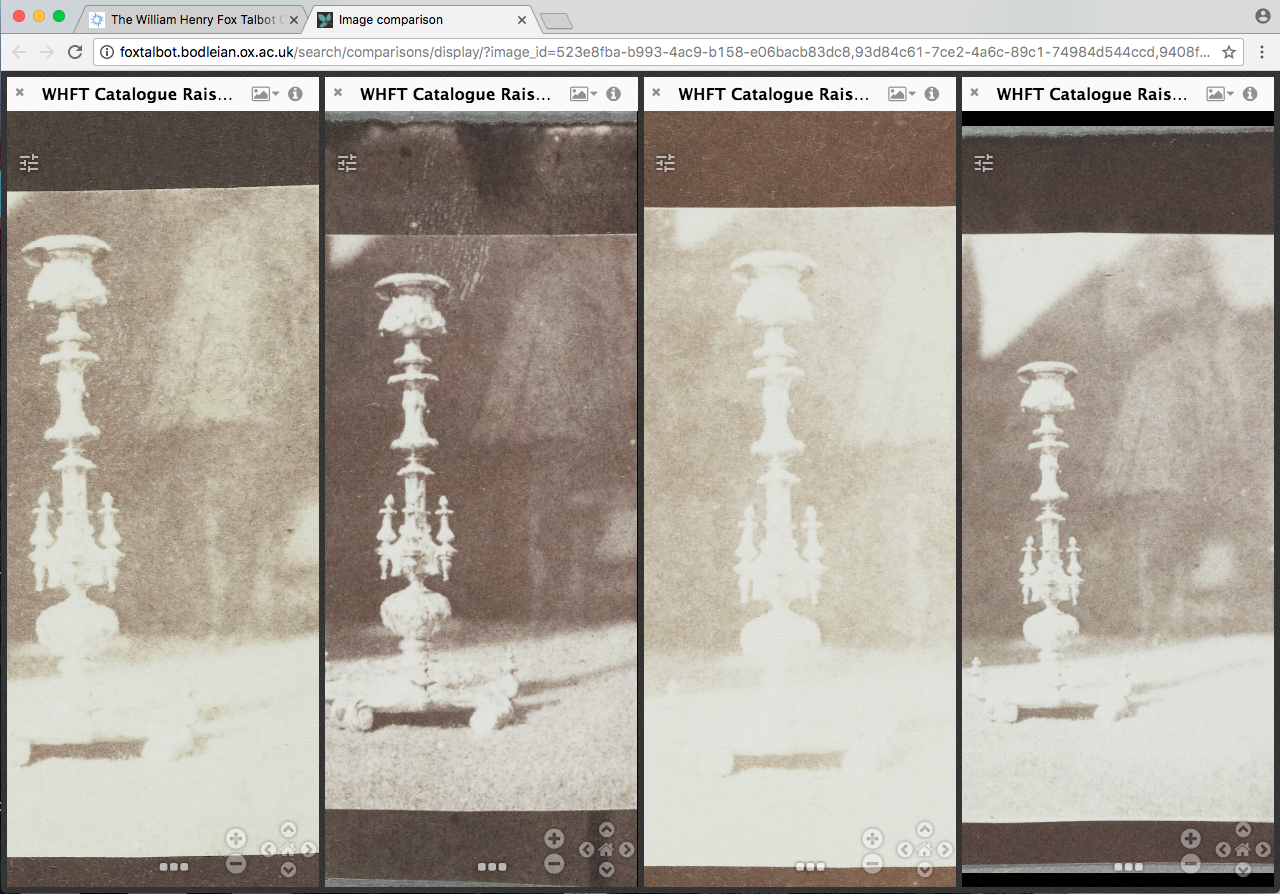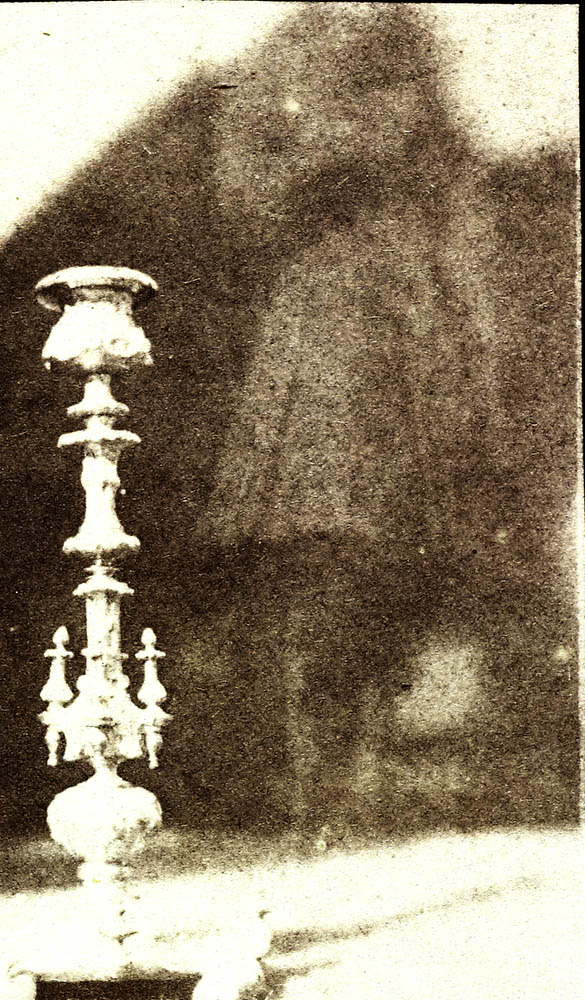guest post by Brian Liddy
It has been a while since I have highlighted my favourite tool available on the website, the ‘Image Comparison’ tool. In the preliminary Image Viewer I can adjust the contrast or brightness of a photograph in an attempt to see if it really is a ‘Portrait of a Man’ or a ‘View of Lacock Abbey’. Once I am satisfied with its identity the next step is to ensure that copy image is a fair representation of the original artefact, in focus and presented the right way up. However, in following the drumbeat of adding new images every day (we are now past the 6000 mark), sometimes a photograph does not fully register with me at first. My eyes somehow fail to feed all their information to the brain and it is only later that I twig on something unusual.
One such surprise came when I recently loaded a set of images that Larry had identified in his DOS database as a photograph of a candlestick with a man in the background. Surely this was a mistake, for the candlestick dominated the scene but I’d be darned if I could see any person. Examining the several examples one by one in the Image Viewer and adjusting the tone revealed what looked like a table leg underneath a tablecloth in the background, but no joy on any human presence. I then loaded the set of four images onto the Image Comparison tool and, if I’m honest, I zoomed in and out between the images in a random fashion. A bit like photocopying before writing an essay, but I found it vaguely comforting. And then, suddenly, there he was plain as day. What I had perceived before as a table leg was in fact a man in a frock coat.
You have possibly seen early photographic portraits where a disembodied arm emerging from off screen is steadying a child. The arm was never meant to be part of the photograph, but as Talbot himself observed in The Pencil of Nature, “the instruments chronicles whatever it sees.” For some unknown practical reason, the immense and ornate candlestick had been placed directly on the floor to have its portrait taken. The man in the background was never meant to be part of the composition. Three of the prints had been made after the negative had been cropped, reducing the already headless man down to his waist, abstracting him sufficiently to make me think that his leg was in fact a table leg. Luckily one print recorded the full negative before it was cropped, for otherwise we might never have known of the presence of this assistant.
Of course this reinforces a couple of bedrock principles of the Catalogue Raisonné. We always strive to reproduce photographs with their full border areas, rather than cropping them to just the image area, for many truths lurk in these peripheries. And we never consider any print to be a duplicate of another – each was hand made and each might contribute some added bit of knowledge to the whole set.
Larry must have spotted the man when he had the opportunity to examine the original prints side by side on a work surface – fortunately they were all in one collection. Now, the Image Comparison tool gives everyone a way to set up a virtual work surface and examine prints from disparate parts of the world side by side. So your holiday spare time assignment is to spot some other lurkers or other surprises. I look forward to hearing from you.
Brian Liddy
• Questions or Comments? Please contact digitalsupport@bodleian.ox.ac.uk • WHFT or Nicolaas Henneman, Ornate Candlestick with Man Behind, calotype negative, waxed, National Science and Media Museum, Bradford, 1937-4288: Schaaf 1420. • WHFT or Nicolaas Henneman, Ornate Candlestick with Man Behind, salted paper prints from a calotype negative, National Science and Media Museum, Bradford, 1937-4287/1-4: Schaaf 1420.





